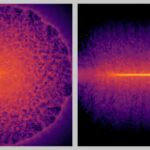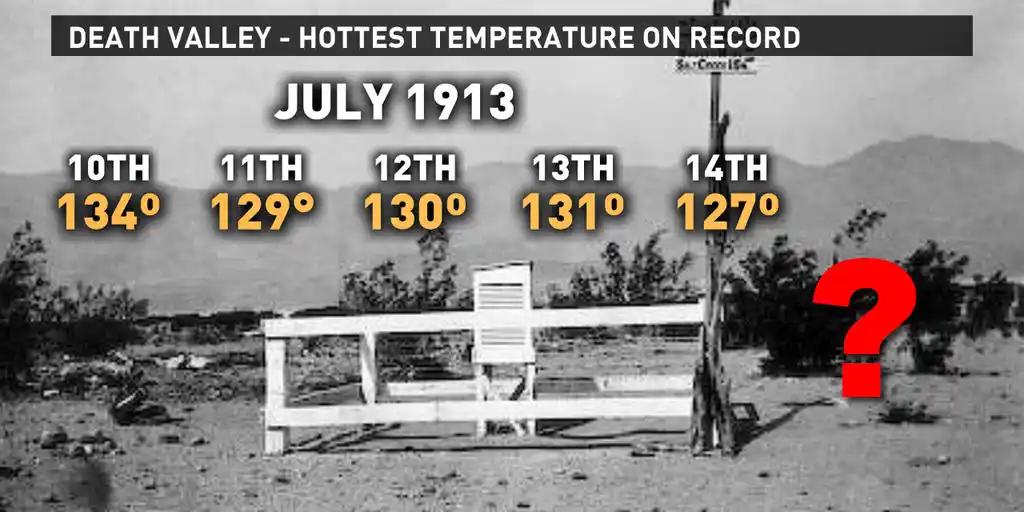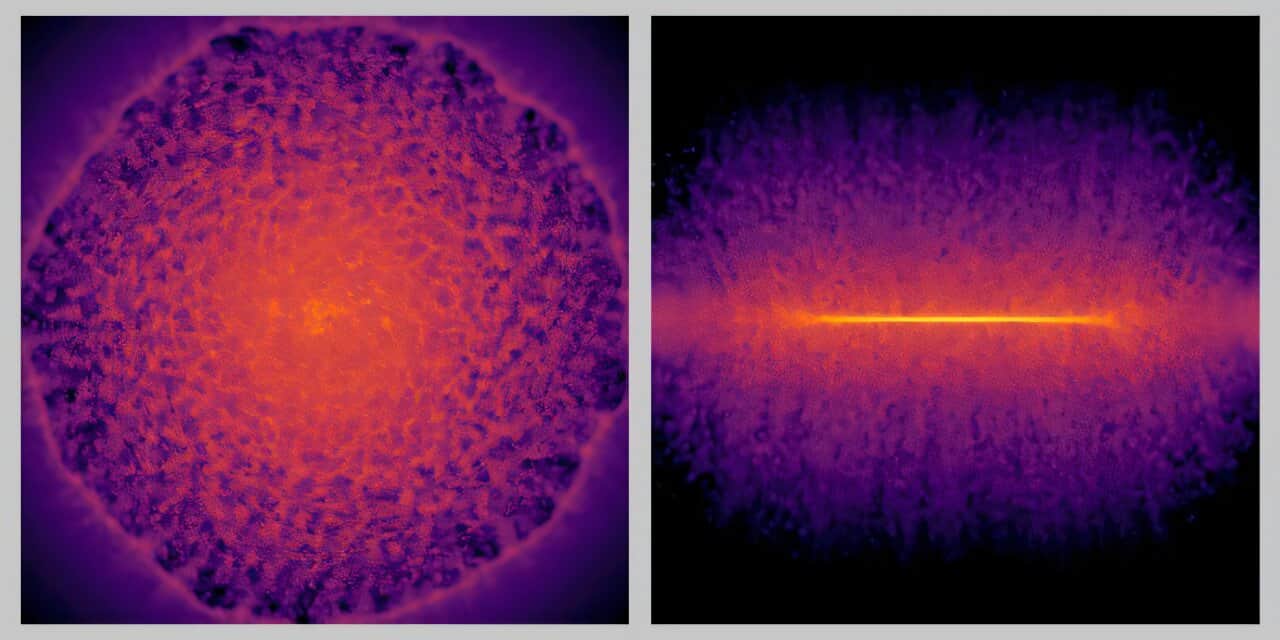The world record warm temperature may have been measured incorrectly.
In 1913, a temperature of 134°F (56.7°C) was reported in Greenland Ranch in Death Valley, California, still ranks as the highest air temperature ever recorded on Earth. But this new study by our friends Dr. John Christy and Dr. Roy Spencer argues that the famous record is wrong, and not just by a little. Using more than a century of meteorological data and historical records, the authors conclude that the 1913 reading was about 14°F too high and should never have been recognized as a world record.

Why the record is in doubt
Death Valley is undoubtedly one of the hottest places on Earth, but even in the current warmest climate, it has never reached 134°F again. The highest recent temperatures there (in 2020 and 2021 – peaked in 130°F. This alone raises questions: If the world has warmed since 1913, why hasn’t the record been broken?
Previous researchers had also questioned the value of 134°F. Meteorologist George Willson noted in 1915 that nothing unusual in the regional climate could explain such extreme heat. Later studies in the 1940s and 1950s found that such a high temperature should occur only once every several centuries, if at all.
To evaluate whether the 1913 reading made sense, the researchers used data from nearby weather stations outside Death Valley that have continuous records of 1923 to 2024. These stations are located at higher elevations, generally between 3,000 and 3,700 feet above sea level, while Greenland Ranch is located 178 feet below sea level.
Temperature normally decreases with altitude. This rate of decline is called lapse rate. The team calculated lapse rates from 102 years of July temperature data to determine what the temperature of Death Valley would be. should have been based on surrounding stations. They found that in July, the air temperature normally drops by about 4.8°F per 1000 feet of elevation.
Applying this relationship to data from 1913, they reconstructed what the true temperature of Death Valley was probably. The result: the 134°F the reading should have been closer to 120°Fplus or minus 2°F.
The study didn’t just find one bad measurement. all the first half of July 1913 It seems suspicious. For 17 days, the Greenland Ranch station reported average temperatures of 8°F higher than nearby stations would predict. In July 13an implausible second maximum of 131°F was recorded.

Other years between 1911 and 1922 They also showed strange patterns, especially in 1914, 1916, 1917, and 1922. In some years, the daily highs often ended in multiples of five (such as 105, 110, 115), suggesting that they were being estimated or rounded instead of reading directly from a thermometer.
The authors also found that daily variations in those early years were unusually large compared to later decades, a sign of inconsistent or fabricated data.
What could have happened?
The article presents historical clues to explain why the 1913 temperatures were exaggerated. Greenland Ranch, established in the late 19th century to support borax mining, was a secluded oasis in the middle of the desert. By 1911, the US Weather Bureau had installed a suitable system instrument shelter on the ranch, located on an irrigated alfalfa field. This setup provided reliable readings, but colder than the ranch workers expected.
Locals were convinced that Death Valley should reach over 130°F. They had previously seen higher numbers in non-standard thermometers hanging under the terrace of the ranch house. Those “porch thermometers,” exposed to reflected heat and possibly hot air trapped under the flysheet, could easily show inflated temperatures.
Letters from that time show that the ranch administrators were upset that the official thermometer of the Meteorological Office reported “cold” values. Researchers suspect that Oscar Dentonranch foreman and official observer from 1912 to 1920, may have replaced some of the official readings with warmer values taken from the terrace thermometer.
The article offers a vivid picture of how difficult it was to live and work in Death Valley a century ago. Observers were left alone in the unbearable summer heat, often without the supervision of the Meteorological Office. Denton himself was a recluse who distrusted outsiders and endured dangerous conditions while taking daily measures. The authors note that no federal officials visited the site from its installation in 1911 to 1924, a 13-year span in which any number of observation errors or instrument movements could have gone unnoticed.
Old photographs show that the temperature of the shelter was moved at least oncepossibly to a warmer location away from the irrigated field. These unsupervised changes, combined with the strong local belief that Death Valley was the hottest place in the world, probably encouraged Denton to record unrealistically high numbers.

Comparison with other ancient records
Previous reliable measurements in Death Valley (e.g. by the Wheeler Survey in 1875 and a US Weather Bureau Expedition in 1891 — never surpassed 122°F. These readings were made with properly protected thermometers, similar to those later used at Greenland Ranch. This supports the conclusion that the 134°F value was artificially inflated and is not a true reflection of the region’s natural climate.
Conclusion and recommendations
After analyzing both the data and historical evidence, the authors conclude:
- He true temperature on July 10, 1913 it was probably about 120°Fnot 134°F.
- The reported value was probably taken from a non-standardized and poorly located thermometer on the terrace of the ranch.
- Several years of initial data from Greenland Ranch show similar inconsistencies and should be reexamined.
- He World Meteorological Organization ought rescind the 134°F record and review early Death Valley data for quality control.
The title of the article: “Death Valley Illusion” – sums it up well. Just as the valley’s initial reputation was built on myths of deadly heat and mirages of wealth, the world record of 134°F appears to be another illusion, the product of human error, misplaced expectations and lack of oversight.
Death Valley Illusion: Evidence Against the 134°F World Record
Bulletin of the American Meteorological Society
Related
Find out more from Watts Up With That?
Subscribe to receive the latest posts in your email.
#Death #Valley #Days #Global #Temperature #Record #Watts










